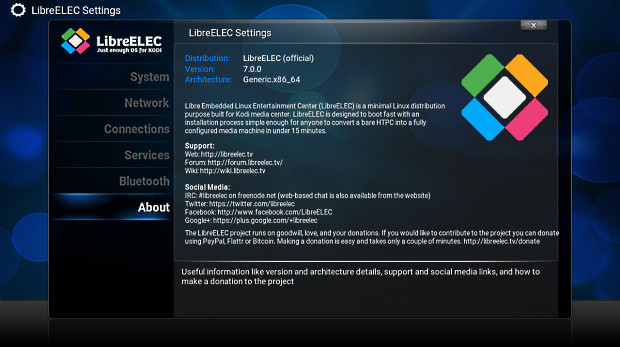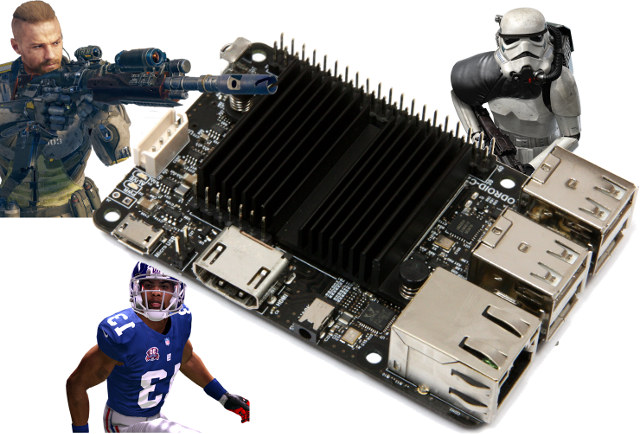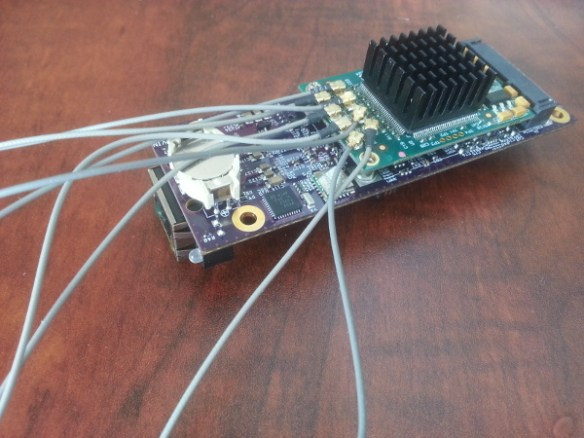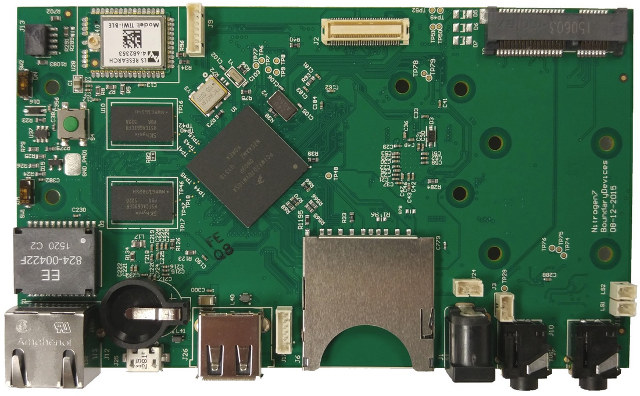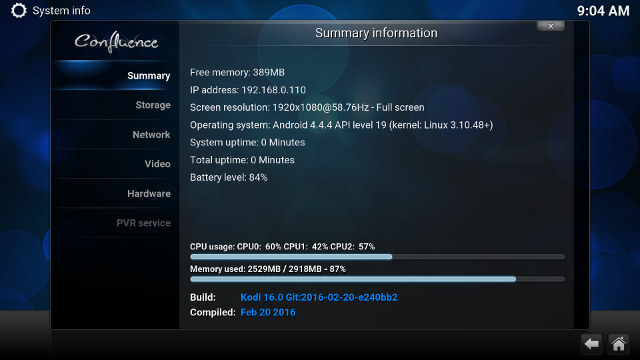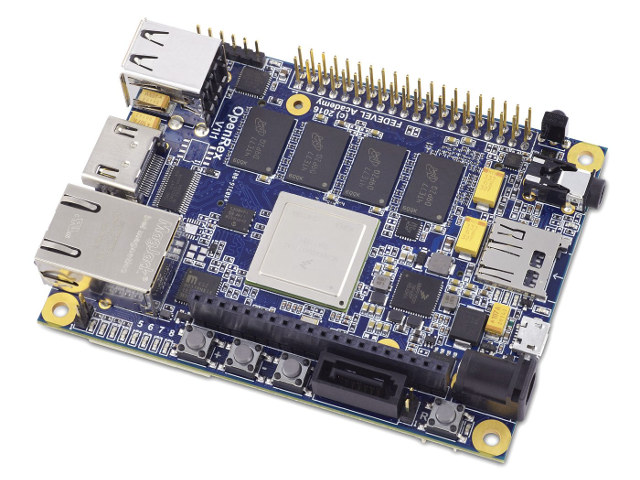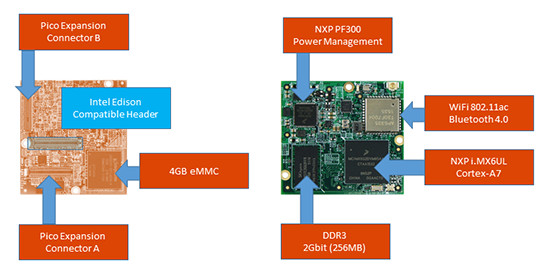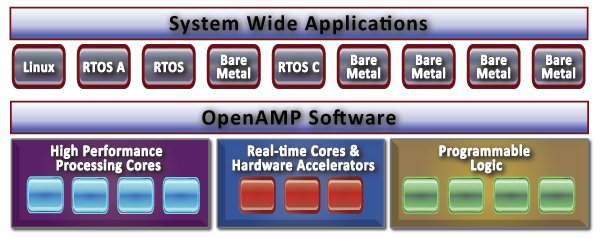It’s not always easy to get along in life, and recently this has been true in Kodi developer community and related project, with Koying leaving his role as the main Kodi Android developer, possibly meaning Kodi 17 won’t get an Android port, and more recently several OpenELEC developers, not satisfied with some of the current project developments, decided to fork it, and create LibreELEC. The team of 25 or so members has now released LibreELEC v7.0.0 based on Kodi 16.1 which had also been released a few days ago. The changelog only reads: The 7.0.0 release contains Kodi Jarvis 16.1 (final) and a fix for Verisign SSL certificate changes that impacted Pandora add-on users. It also addresses a bluez crash, a firmware update for Intel Skylake users, and a fix for an Amlogic CEC issue on WeTek Play/Core. Most importantly it also contains our new logo branding. The images are […]
Play High-end PC Games on ARM Linux Boards with Moonlight Embedded
Nvidia first showcased PC games streaming to Nvidia Project SHIELD Game Console at CES 2013, and since then Moonlight project has been created to provide an open source implementation compatible with Nvidia Gamestream, and supported on Linux, Mac OS and Windows PC, Android & iOS mobile devices, as well as Samsung VR kits. There’s also an implementation called Moonlight Embedded designed for ARM Linux platforms such as Raspberry Pi,ODROID, Cubox-i boards, and ODROID-C1 and ODROID-C2 boards even got support for H.265 streaming very recently allowing for better quality over H.265 at a given bit rate, and possibly 4K @ 60 Hz gaming on ODROID-C2 board. You’ll need a Windows gaming PC with an Nvidia GTX 600/700/900 series GPU, a wired connecting or a high-end 802.11 router or greater, and Nvidia Geforce Experience (GFE) installed on your PC. H.265 requires an Nvidia 900 series GPU such as Nvidia GTX960. Once this […]
AVC8000nano mini PCIe Frame Grabber Captures up to 8 D1 Videos
There are plenty of solutions to stream or capture multiple video streams from cameras, but example for security purpose, but usually the equipment is relatively large and heavy. Advanced Micro Peripherals AVC8000nano mini PCIe capture card miniaturizes all that thanks to its form factor, and its 8 u.FL connectors used to capture eight D1 videos at full frame rate. AVC8000nano features: Video Inputs 8x Live NTSC/PAL video inputs with 8x 10-bit ADC and anti-aliasing filters 8x D1 size capture at full frame rate Formats – NTSC-M, NTSC-Japan, NTSC (4.43), RS-170, PAL-B,G,N, PAL-D, PAL-H, PAL-I, PAL-M, PAL-CN, PAL-60 SECAM Adjustments – Contrast, saturation, hue (or chroma phase), and brightness. Software adjustable Sharpness, Gamma and noise suppression Video Capture Formats – RGB555, RGB565, YCbCr 4:2:2, YCbCr 4:1:1 Windows support with Drivers and DirectShow/DirectDraw Linux with drivers and Video4Linux Form factor – Full height mini PCI Express Temperature Range – Commercial: 0°C to […]
Boundary Devices Nitrogen7 Single Board Computer is Powered by NXP i.MX7 Processor
While several system-on-modules based on Freescale/NXP i.MX7 processor have been announced such as Compulab CL-SOM-iMX7, or TechNexion PICO-IMX7-EMMC, I had not seen many single board computers or development boards based on the new processor, apart from Freescale i.MX7 96Boards by Arrow Electronics which was scheduled for Q4 2015, but has yet to launch. Boundary Devices Nitrogen7 board is another option that’s available now (in limited quantities) with NXP i.MX7 Cortex A7+Cortex M4 processor, 1GB RAM, 4 to 64GB eMMC, wired and wireless connectivity, and expansion headers. Nitrogen7 board specifications: SoC – Freescale i.MX7 single or dual ARM Cortex-A7 processor @ up to 1GHz + ARM Cortex-M4 MCU + 2D graphics engine System Memory – 1GB DDR3L Storage – 4GB eMMC flash (expandable to 64GB), 2MB Serial NOR Flash, SD card slot Connectivity – 1x 10/100/1Gb Ethernet, WiFi 802.11 a/b/g/n, Bluetooth 4.1 (TiWi-BLE combo module) Display – 24-bit RGB (via expansion […]
Kodi 16 “Jarvis” Release
This morning, I saw Kodi installed from Google Play get an update in one of my Android device, and that means that Kodi 16.0 “Jarvis” has now been released. As usual it’s available for Windows, Linux, Mac OS, Android, and iOS, with specific Linux ports for Raspberry Pi boards, and several Freescale/NXP i.MX6 boards such as Wandboard or EzeeCube. You can get the full Changelog in the Wiki, but some of the main changes against Kodi 15 include: Various new features for Live TV and PVR (Personal Video Recorder) Added RDS Radio, FM radio, scheduling recordings of TV shows… Various improvements such as speeding up EPG database access. Added, updated, and improved PVR backend clients addons for all popular third-party external PVR backend platforms: FilmOn, HDHomeRun, Enigma 2, Tvheadend HTSP Client, and so on. Add-ons Framework, API, and Manager improvements Platform Independent Playback improvements : software DTS-HD decode with libdcadec, […]
OpenRex NXP I.MX6 Open Source Hardware Board Design Files Released
OpenRex is an open source hardware board powered by NXP i.MX6 designed by Fedevel, and the company has announced the release of Altium project design files including both schematics and PCB layout source files, as well as manufacturing documentation. OpenRex board specifications: SoC – NXP i.MX6 processor @ up to 4 cores @ 1.2GHz with 2D and 3D GPU MCU – NXP LPC1345FHN33 ARM Cortex-M3 micro-controller System Memory – DDR3-1066 (533MHz) up to 4GB Storage – SATA, micro SD slot, 1x I2C EEPROM, 1x SPI FLASH Video Output / Display I/F – 1x HDMI up to 2048×1536 resolution, LVDS, parallel RGB display output, touchscreen connector (Optional 4x Analog input) Audio – HDMI output, 3.5mm stereo headphone jack, Camera – 1x Parallel CSI camera (shared with RGB output), 1x MIPI CSI connector compatible with Raspberry Pi (shared with LVDS) Connectivity – 1x 10/100/1000 Mbps Ethernet USB – 2x USB 2.0 host […]
Wandboard Introduces $69 Hobbitboard Made for Brillo Powered by NXP i.MX6 UltraLite Processor
Wandboard was one of the first to launch boards based on Freescale i.MX6 Solo, Dual and Quad in early 2013. The boards are comprise of an EDM system-on-module and a carrierboard, that makes it not only suitable as a single board computer, but you could also use the boards to start developing software, while making your own carrierboard to match your application. Wandboard.org community sent me an email last night to let me know about their latest board called Hobbitboard, or in full “Hobbitboard Made for Brillo”, powered by NXP i.MX6 UltraLite Cortex A7 processor, which follows the same principle, and includes Hobbit Compute Module and Hobbit I/O Carrierboard. Hobbit Compute Module specifications: SoC – NXP i.MX6 UltraLite Cortex A7 processor @ 528 MHz System Memory – 256MB DDR3 Storage – 4GB eMMC flash Connectivity – 802.11ac WiFi and Bluetooth 4.0 (Ampak AP6335) Board Connectors – Two Pico Expansion header […]
OpenAMP Open Source Framework Provides the Glue between Linux, RTOS, and Bare Metal Apps in Heterogeneous SoCs
SoCs becoming more complex, and go beyond homogeneous multicore systems by mixing different type of cores such as high performance cores, low power real-time cores, or even FPGA fabric. Examples include NXP i.MX6 SoloX with an ARM Cortex A9 core for Linux apps, and an ARM Cortex M4 core for real-time tasks, or Xilinx Zynq UltraScale+ MPSoC with Cortex A53 core for higher level apps, Cortex R5 cores for real-time processing, and Ultrascale FPGA logic. All these different cores are running their own Linux based OS, real-time operating system or bare metal application, and all this makes software development an even greater difficult tasks. In order to reduce the complexity, and address some of the issues, the Multicore Association has launched a new working group targeting the management, expansion, and standardization of OpenAMP (Open Asymmetric Multi Processing), an open source framework that allows operating systems to interact within a broad […]


